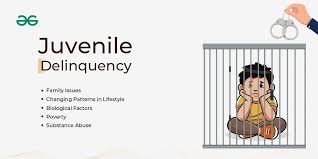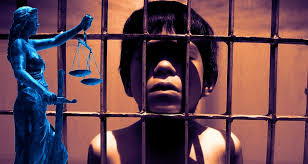Juvenile Laws at Micronesia
The Federated States of Micronesia (FSM) has a juvenile justice system that prioritizes the rehabilitation and protection of minors who come into conflict with the law. Like many other countries, Micronesia recognizes that juveniles, being under 18 years of age, require a different approach to justice compared to adults. The country’s laws aim to protect children's rights, provide educational opportunities, and offer rehabilitative measures rather than purely punitive ones.
Here is an overview of juvenile laws and the juvenile justice system in the Federated States of Micronesia:
1. Definition of a Juvenile:
A juvenile in Micronesia is defined as a person under the age of 18. The legal system distinguishes between minors and adults, recognizing that juveniles need different treatment and handling when involved in criminal activities.
2. Legal Framework and International Influence:
The FSM Constitution guarantees fundamental rights, including those of children. In terms of juvenile justice, the constitution and other national laws reflect the principles of protecting minors and ensuring fair treatment in the justice system.
International Treaties: Micronesia is a signatory to international conventions such as the United Nations Convention on the Rights of the Child (CRC), which emphasizes the protection of children's rights, including those involved in criminal offenses. These international agreements influence the country’s juvenile justice laws, ensuring they align with global child protection standards.
3. Juvenile Justice System:
The juvenile justice system in Micronesia aims to provide fair treatment for minors and emphasizes their rehabilitation and reintegration into society.
Juvenile Courts: The FSM has juvenile courts that specifically handle cases involving minors. These courts operate with a focus on the juvenile's best interests and rehabilitation, with consideration given to the severity of the crime, the juvenile’s background, and their potential for rehabilitation.
4. Principles of Juvenile Justice:
Best Interests of the Child: The primary guiding principle in the juvenile justice system in Micronesia is the "best interests of the child." The system aims to protect minors from harm and to ensure that decisions are made with their welfare, development, and rehabilitation in mind.
Rehabilitation Over Punishment: Micronesia’s juvenile justice laws emphasize rehabilitative measures rather than punishment. The goal is to reintegrate juveniles into society in a way that minimizes the risk of reoffending. This is achieved through educational programs, counseling, and vocational training.
Restorative Justice: Restorative justice, which involves the offender taking responsibility for their actions and engaging in activities to repair the harm done to the victim and the community, is often used in juvenile cases.
5. Age of Criminal Responsibility:
The age of criminal responsibility in Micronesia is generally considered to be 14 years old. This means that children under 14 are not legally considered responsible for their actions and cannot be held criminally accountable. However, juveniles aged 14 and above can be held accountable for their actions but are subject to a juvenile justice process that focuses on rehabilitation rather than harsh punishment.
For minors who are over 14 but under 18, the courts evaluate their cases individually, considering factors like maturity, the severity of the crime, and the circumstances surrounding the offense.
6. Punishments and Measures:
Rehabilitation and Education: The justice system focuses on rehabilitation, and juveniles who come into conflict with the law are often offered educational opportunities, vocational training, and counseling. These measures aim to address the root causes of their criminal behavior and help them reintegrate into society.
Detention: In cases where detention is deemed necessary, juveniles may be placed in specialized juvenile detention centers. These facilities are designed to provide education, vocational training, and psychological support, ensuring that the juvenile is given the opportunity to reform.
Alternative Sentencing: Juveniles may be sentenced to non-custodial measures such as probation, community service, or family counseling, depending on the offense and the juvenile's circumstances. These alternatives are intended to allow the juvenile to continue their education and be supported within their community.
7. Rights of Juveniles:
Right to Fair Trial: Juveniles in Micronesia have the right to a fair trial, with access to legal representation. In cases where a juvenile cannot afford a lawyer, legal aid is typically provided.
Protection from Abuse: Juveniles are protected from abuse and exploitation within the justice system. This includes ensuring that minors are not subjected to cruel, inhuman, or degrading treatment or punishment while in detention or during legal proceedings.
Right to Education: Even if a juvenile is detained, they are entitled to receive education, which is a critical part of their rehabilitation process.
Right to Privacy: Juveniles involved in legal matters are afforded certain privacy protections. For example, their identities and cases are typically not made public, ensuring that they are not unduly stigmatized.
8. Family and Community Involvement:
The family plays an important role in the rehabilitation process of juvenile offenders. Families may be involved in counseling or other rehabilitative efforts to address the issues that led to the juvenile's involvement in criminal activity.
Community-Based Programs: The community is also considered a key part of rehabilitation. Juveniles may be required to participate in community service or restorative justice programs that aim to repair harm and help the juvenile reintegrate into their social environment.
9. Preventive Measures:
Micronesia places significant emphasis on preventing juvenile delinquency through early intervention and community-based programs. Efforts are made to address factors such as poverty, family instability, and lack of education that often contribute to juvenile crime.
Educational and Recreational Programs: Providing access to quality education and engaging young people in positive extracurricular activities, such as sports or arts, is seen as a way to prevent delinquency and offer alternatives to crime.
Social Services: The government and non-governmental organizations in Micronesia often collaborate to provide support services for at-risk youth, including family counseling, mental health services, and educational support.
10. Challenges in the Juvenile Justice System:
Limited Resources: Like many small island nations, Micronesia faces challenges with limited resources for its juvenile justice system. This includes a shortage of facilities, staff, and training for those involved in juvenile justice.
Overcrowding: There may be overcrowding in detention facilities, which can negatively impact the ability to provide adequate education, counseling, and rehabilitation for juvenile offenders.
Awareness and Training: More education and training are needed for law enforcement, judges, and social workers to ensure that juvenile cases are handled in accordance with the principles of juvenile justice, focusing on rehabilitation and child protection.
11. International and Regional Commitments:
As a signatory to the United Nations Convention on the Rights of the Child (CRC), Micronesia is committed to upholding international standards for the treatment of juveniles and protecting children’s rights.
The country’s laws and practices are influenced by international standards, which guide its efforts to provide a fair and rehabilitative juvenile justice system.
Conclusion:
The juvenile justice system in the Federated States of Micronesia is designed to protect and rehabilitate minors who come into conflict with the law, with a strong focus on rehabilitation, education, and reintegration into society. The system prioritizes the best interests of the child, ensuring that juveniles are treated in a manner appropriate to their age and maturity. However, challenges such as limited resources, overcrowded detention facilities, and the need for further training and awareness remain. Continued efforts are necessary to strengthen the system and provide better opportunities for juvenile offenders.





0 comments